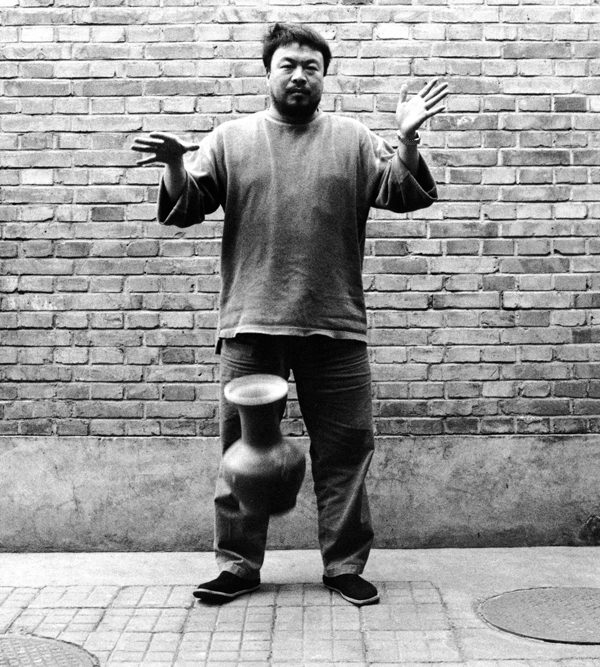Throughout history, a lot of attention has been paid to art’s capacity for moral education. From Plato to Mao, thinkers and leaders have consistently written about art as a tool for moral education in society. Now there is another reason that the subjects of art and ethics have conjoined. Let us call this ‘immoral art’.
‘Immoral’ art would be art that, by its very enactment, could be considered morally dubious. Since the arrival of postmodern – and in particular performance – art, there have been legitimate concerns raised about the impropriety of some artworks. Whereas historically art was only thought capable of being instrumentally immoral, some new art works seem to be immoral in themselves.
Cases of such artworks abound. In 1974, grandmother of performance art, Marina Abramovich, created a piece called ‘Rhythm 0’ which invited audience members to do anything they liked to her with a variety of items. The items ranged from feathers, to knives, to a loaded gun. She is reported to have said “I was ready to die”.[1] In the event, she was groped, stripped of her clothes, cut with razor blades, and had a loaded gun aimed at her head.[2]

Another example would be Marco Evaristti’s ‘Helena & El Pescador’. This work displayed 10 food blenders each containing a live goldfish. The visitors were given the option of blitzing the fish and some did.[3]

A final example is arguably an even better illustration, given that it is the artist doing – and not just facilitating – the immoral act. In 1995, renowned Chinese artist, Ai Wei Wei, photographed himself smashing a 2000-year-old, Han dynasty earn. [4] Predictably, the act of iconoclasm was considered unethical by many.

To be sure, each of these pieces vary immensely in their potential ethical transgressions. Assuming any blame is warranted at all, it’s not clear the artists themselves are blame worthy (Abramovich and Evaristti merely set the conditions for others to do harm). But let us not equivocate. The actions contained within these works – bodily harm, arbitrarily killing fish, and the destruction of historical artefact – seem bad. (Though importantly were never found to be illegal). For the sake of argument, let us say these works were immoral in themselves. The question becomes: could immoral art ever be justified?
On the one hand, these works all have commendable ethical intentions – they seek to improve the audience’s moral sensibilities in an educational and challenging way. Abramovich’s piece is a warning of people’s potential to violence when they are absolved of responsibility; Evaristti’s piece forces the audience to confront humanity’s immense power over animals, and Wei’s piece encourages the audience to preserve art and heritage. As a result, it could be argued that a piece of art successful in conveying its message might generate more overall good than is lost in producing the piece. Additionally, many argue that the principle of artistic freedom is important. For example, when defending Evaristti, his lawyer argued that, “an artist has the right to create works which defy our concept of what is right and what is wrong.” [5] Limiting art might do more harm than good.
On the other hand, as regards the good intentions of the artists, it’s not always clear that an artist’s intended message is the one actually received. Indeed, in the case of assault, the converse is often true: when someone is violent, others often become desensitised to, and more likely to commit, further violence. On a separate note, it’s not clear why it is necessary for the works to be immoral themselves in order to achieve an effective message: many people believe conventional art is highly successful in achieving moral education.
At the same time, it seems like we censor unethical behaviour in almost all other activities – why would art be any different? In scientific research, for example, there are numerous codes and principles which apply (and which supplement the general legal constraints on all behaviour). These are enforced formally – by governmental bodies – and informally – by means of professional practice. [6] To my knowledge, art does not have anything like this. Someone who thought ‘immoral art’ should never be permissible could reasonably ask what makes art so different from science. In short, what could ever justify art receiving less ethical scrutiny than science?
The question does not seem to have an easy answer. Whether or not ‘immoral art’ could in theory be justified seems to depend a lot on the specific case. Moreover, concepts like ‘art’, ‘immorality’, and ‘justification’ are all open to considerable interpretation…the meanings of the words always seem to be moving. The question is nevertheless an important one. Afterall, you never know when an artist will push the ethical boundaries next.
[1] https://www.theguardian.com/artanddesign/2014/may/12/marina-abramovic-ready-to-die-serpentine-gallery-512-hours
[2] https://www.elitereaders.com/performance-artist-marina-abramovic-social-experiment/
[3] https://blogs.wsj.com/speakeasy/2013/08/28/marco-evaristti-and-his-goldfish-are-still-making-waves/
[4] https://www.futurelearn.com/courses/art-crime/0/steps/11886
[5] http://news.bbc.co.uk/1/hi/world/europe/3040891.stm
[6] https://www.visionlearning.com/en/library/Process-of-Science/49/Scientific-Ethics/161